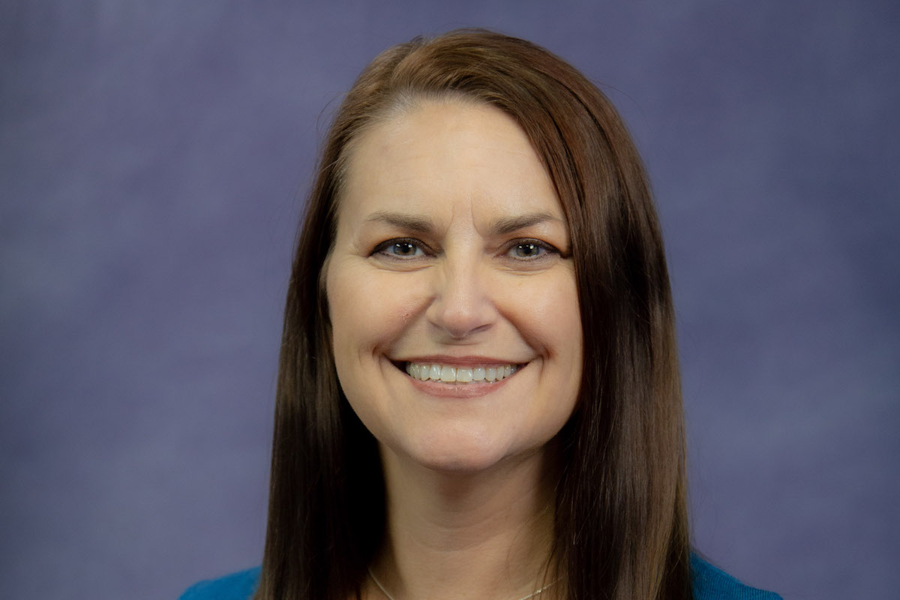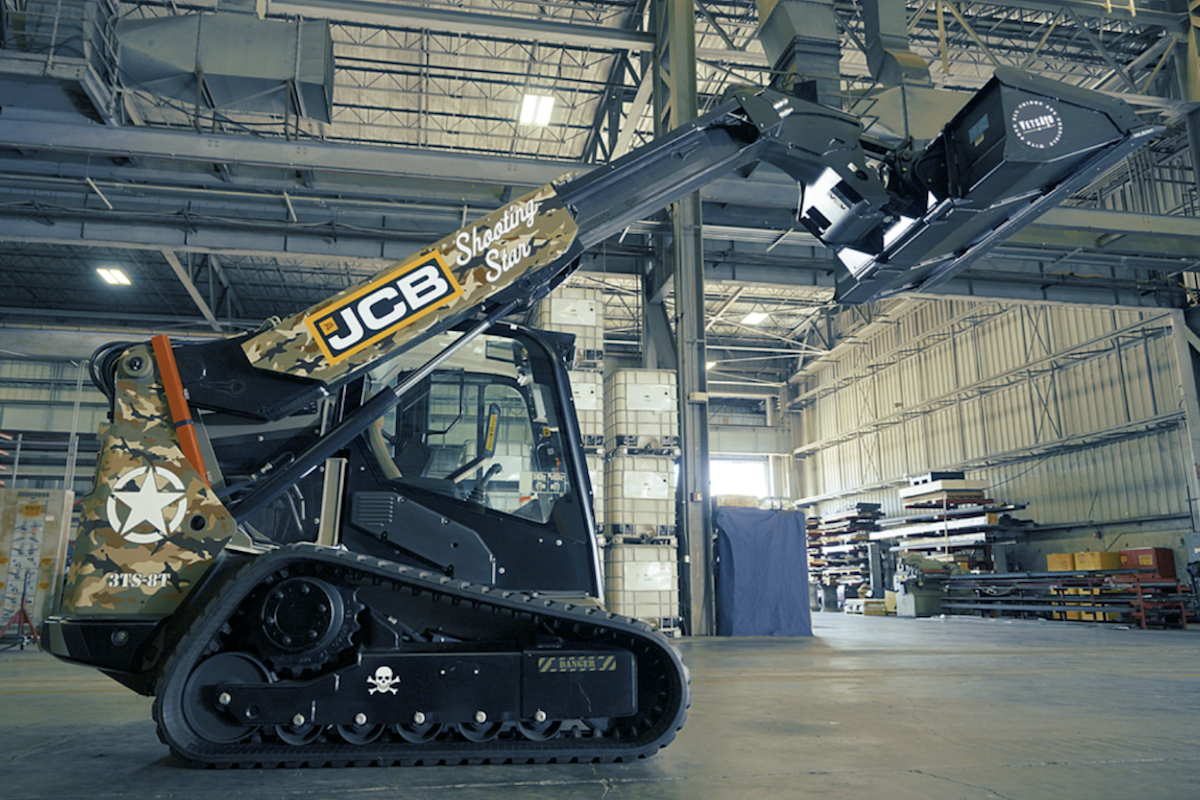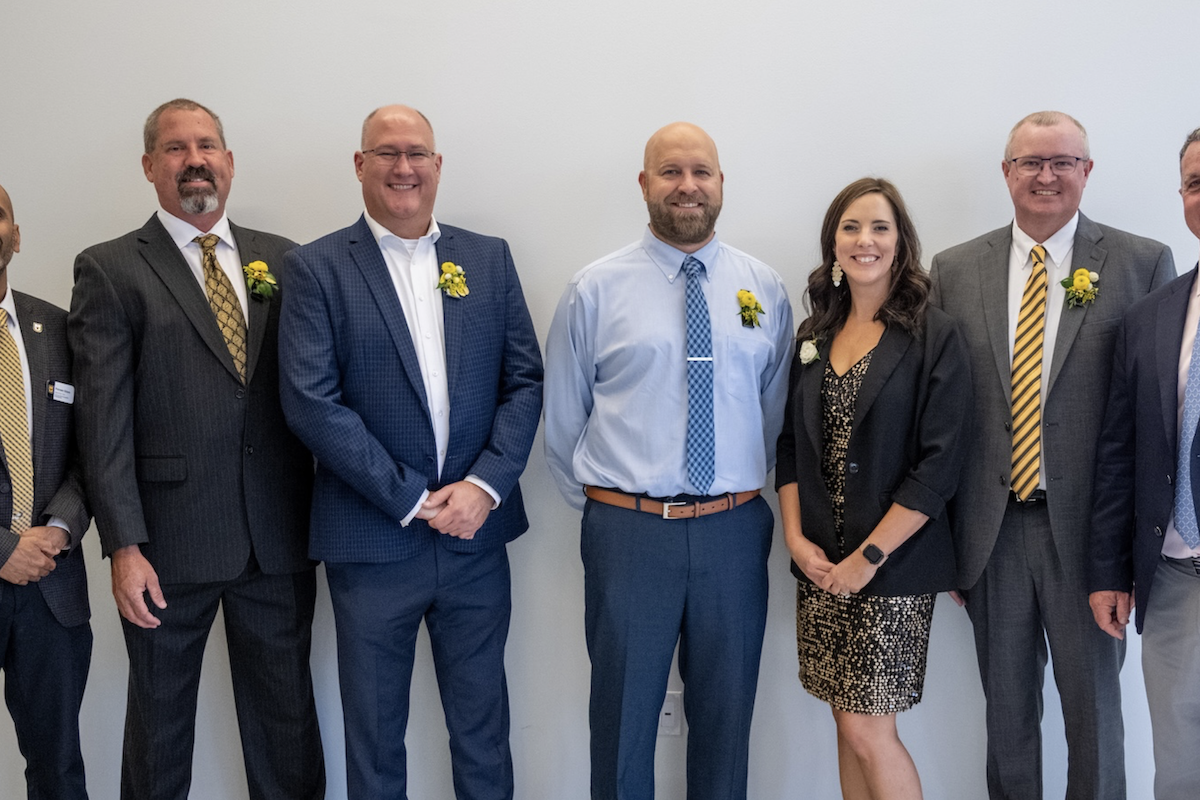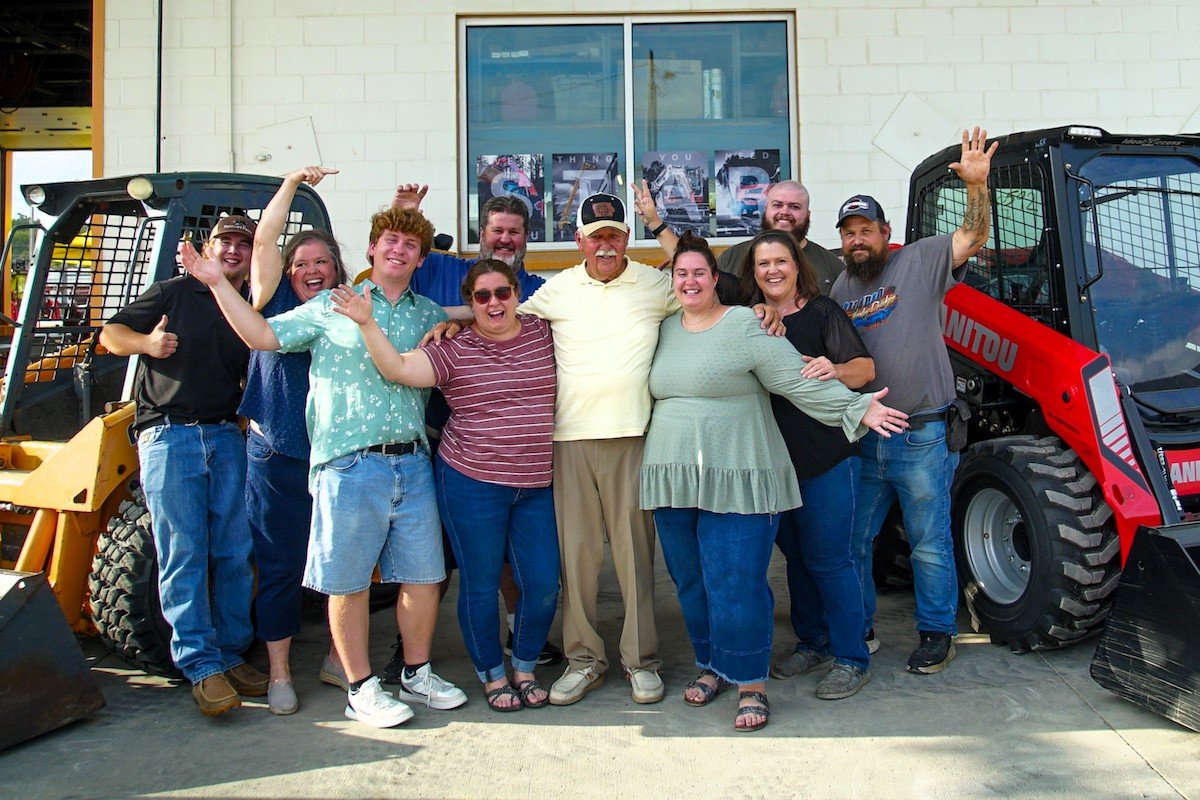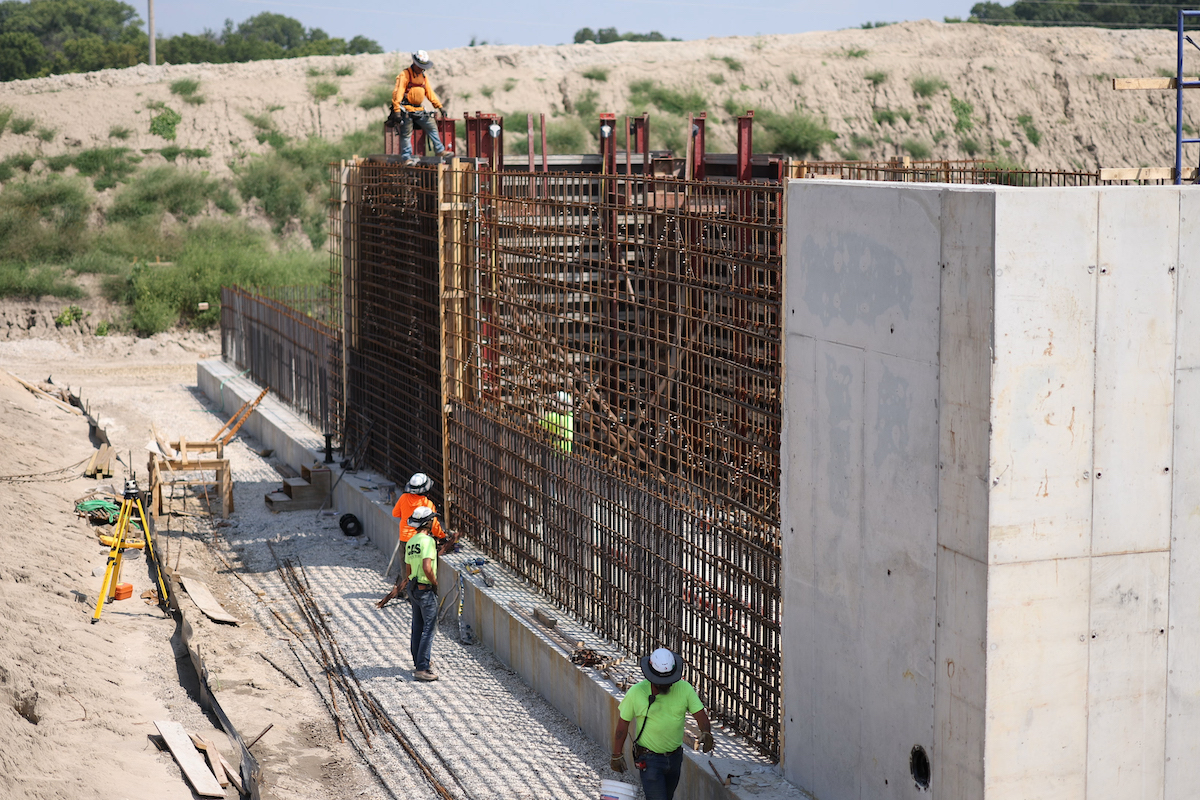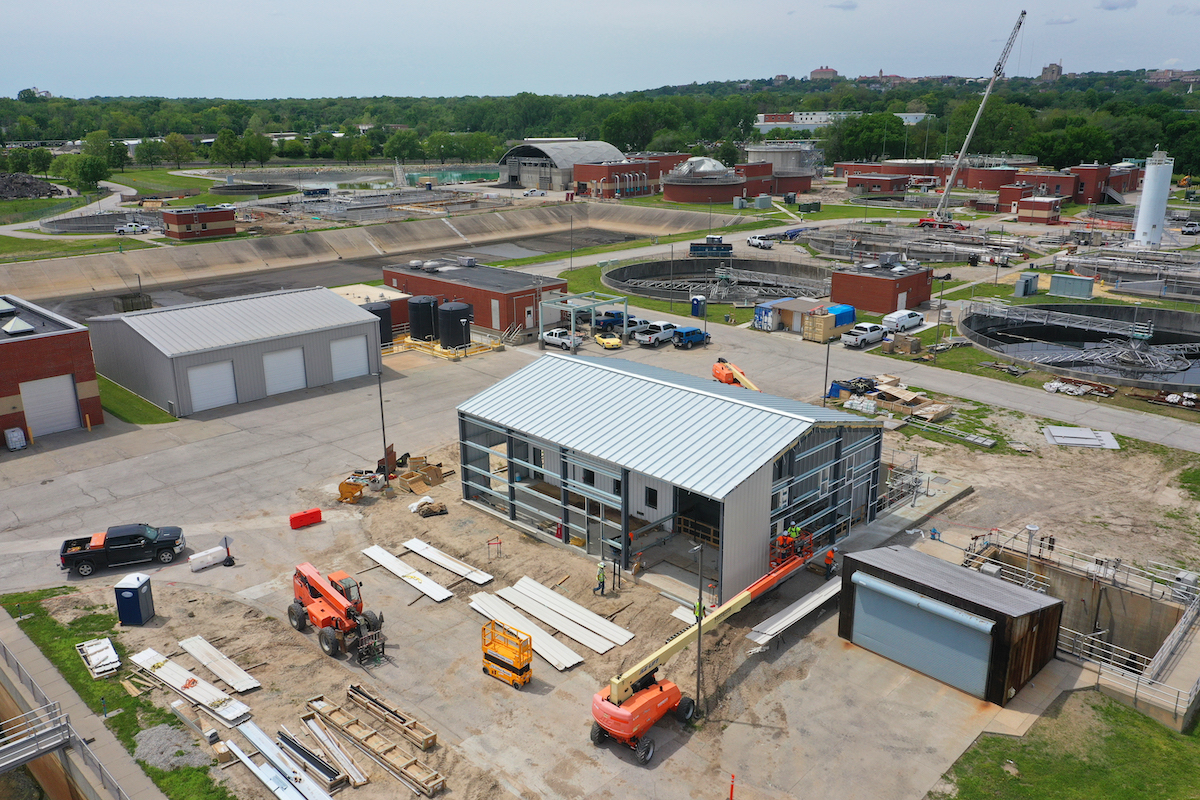General contractor Z Contractors, Inc., of Shelby Township, Michigan, built the new Second Avenue bridge skeleton in a nearby parking lot at the same time they constructed the bridge foundation and abutment walls along the freeway. The simultaneous construction kept workers and the public safe while minimizing closures on I-94.
When crews finished the two separate parts, they closed the freeway just long enough to move the bridge skeleton to its permanent location – a complicated, highly choreographed maneuver – and now work to pour the deck, finish post-tensioning, and open the bridge by year’s end.
The $27 million Second Avenue Bridge project features Michigan’s first network tied-arch bridge. The clear span design allows flexibility to move lanes as needed to maintain traffic when the Michigan Department of Transportation (MDOT) reconstructs the freeway as part of the $3 billion I-94 Modernization project. That endeavor includes the Second Avenue bridge, over 70 other structures, widening of 6.7 miles of I-94, and numerous safety improvements.
Financed with state and federal funds – including a $1 million grant from the U.S. Department of Transportation for design innovation – the new Second Avenue bridge features a skewed configuration (with two acute corners and two obtuse corners) to accommodate frontage roads and adjacent properties.

| Your local Gomaco dealer |
|---|
| Fabick CAT/MO |
| Road Machinery and Supplies Company |
When completed, the new bridge will provide one vehicular lane in each direction, 8-foot-wide bike lanes, and 9-foot-wide sidewalks with protective barriers. At 245 feet long, 96.5 feet wide, and 44.5 feet tall, the new structure is substantially larger than the old Second Avenue bridge.
Before Z Contractors could build the new bridge skeleton in a Wayne State parking lot, they needed to prep the asphalt surface.
“They put down 18 inches of stone, then had to drive pilings and pour concrete footings for the bridge to sit on as it was constructed,” said Andrea Wilcox, MDOT’s Project Manager.
Prior to full bridge construction, MDOT required full-size mockups of a bridge knuckle to evaluate the design and allow for modifications.
In the first mockup, “With all the steel in the tie girders and the knuckles, we had some issues getting the concrete to flow properly,” Wilcox said. “We weren’t getting concrete in the center so we had some voids.”

| Your local Manitou dealer |
|---|
| Star Equipment LTD |
Designers tweaked the concrete mix and the design of the reinforcing steel, then crews built a second mock-up. That didn’t work as well as desired, so designers made more changes.
“The third time was the charm,” Wilcox said.
The process of building mockups and adjusting the design took about a year. Once the mockup was approved, the contractor ordered all the materials then built the permanent bridge skeleton over the next year.
“Over a period of three days, we accepted 80 semi loads, which took Mammoet two weeks to assemble into trailer configurations so the bridge could be lifted with their equipment,” said Blake Zapczynski, President of Z Contractors.
To start the trip across the parking lot, “The bridge initially had to be jacked up about 8 feet in elevation, then we removed the temporary falsework that supported the structure as we constructed it,” Zapczynski said. “Mammoet then drove their trailers beneath the bridge and lifted it two more inches to take the load off their temporary supports that initially lifted the structure. Once those were removed, the trailers had the full load of the bridge.”

| Your local Iowa Mold Tooling Co Inc dealer |
|---|
| Star Equipment LTD |
With the SPMTs traveling at about 5 mph, it took an entire day to move the bridge to its staging area behind the abutment wall, including a 90-degree turn. Throughout the process, the team used continuously monitored survey equipment to ensure the movement didn’t damage the structure.
In addition to the SPMTs holding the bridge skeleton in the staging area behind the north abutment wall, Mammoet positioned another set of SPMTs on the freeway. On Saturday morning, they built falsework on those trailers to support the skeleton structure.
On Saturday evening, “When the bridge was slid over the north abutment wall, it was skidded on steel beams with push-pull jacks onto the SPMTs positioned on the freeway,” Zapczynski said.
Starting Sunday around 10 a.m., the bridge traveled across the freeway to the front face of the south abutment wall.
During the move, “We had to make sure the bridge stayed within the plane,” Wilcox said. “It couldn’t flex more than 3 inches, and we tried to keep it within 2 inches so we didn’t crack any of the concrete structure.”

| Your local Link Belt dealer |
|---|
| Kirby-Smith Machinery |
Unfortunately, the night before the move, rain softened the grade of the aggregate covering the freeway.
“When we moved the bridge the first 20 feet, it flexed a little over 2 inches,” Wilcox said. “We wanted it to be less than that, so we decided to run the SPMTs on steel road plates. We had 8 feet of plates for the SPMTs to move on, then we had to transfer the plates to the front.”
That repetitive process slowed movement even further. However, “It allowed us to check every 8 feet that the bridge was still within the tolerances we wanted,” Wilcox said. “When it wasn’t, we adjusted it – maybe lowering a corner a half-inch or so depending on the readings.”
The move across the freeway finished around 5 p.m. Sunday.
In the following days, “We had to transfer the bridge to another set of skid tracks to travel over the top of the south abutment wall,” Zapczynski said. “At the same time, we transferred the north end of the bridge onto the skid tracks on the north abutment wall. At that point, there was no trailer supporting the bridge; it was all on skid tracks, and we skidded the bridge into position.”

| Your local Leica Geosystems Inc dealer |
|---|
| Laser Specialist inc |
Crews then installed jacking towers beneath the bridge. They lifted it, removed all the skid tracks, then lowered the bridge into its permanent position on Wednesday of that week.
Before opening the freeway, crews welded the bearings onto the bridge and removed the stone on the roadway. I-94 opened to traffic on schedule by 4 a.m. on Friday, July 29, 2022.
“We have 12 post-tensioned ducts that run longitudinally though the concrete tie girders,” he explained. “We post-tensioned six ducts in the parking lot. After our first stage of deck pours, we need to post-tension the remaining six ducts. When we perform that work, we’ll have to close the freeway for an additional five days.”
The Second Avenue bridge is scheduled to open to traffic by the end of December 2022. MDOT anticipates construction on I-94 to start in 2024.
- Owner – Michigan Department of Transportation; Andrea Wilcox, Project Manager; Steve Galindo, Former Project Manager; Dave Harris, Assistant Construction Engineer; John Belcher, Lansing Bureau of Bridges and Structures
- Lead Designer – Tetra Tech, Detroit, Michigan
- Design Subcontractor – HDR, Ann Arbor, Michigan
- Independent Design Consultant – Parsons, Troy, Michigan
- General Contractor – Z Contractors, Inc., Shelby Township, Michigan; Blake Zapczynski, President; Mike Duffy, Project Manager; Bruce Barnes, Project Superintendent; Pat Sullivan, Carpenter Foreman
- Bridge Movement Subcontractor – Mammoet USA, Rosharon, Texas; Tim Dowdle, Project Manager





















